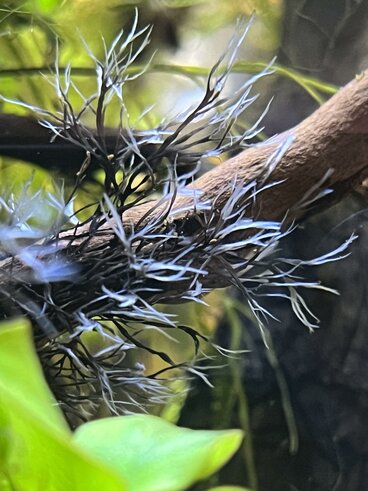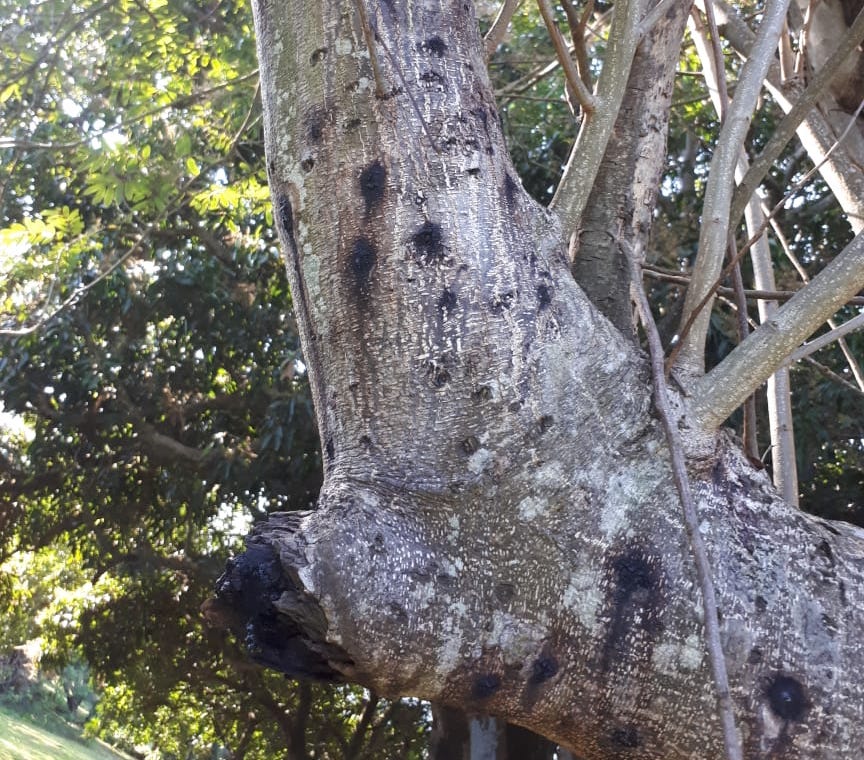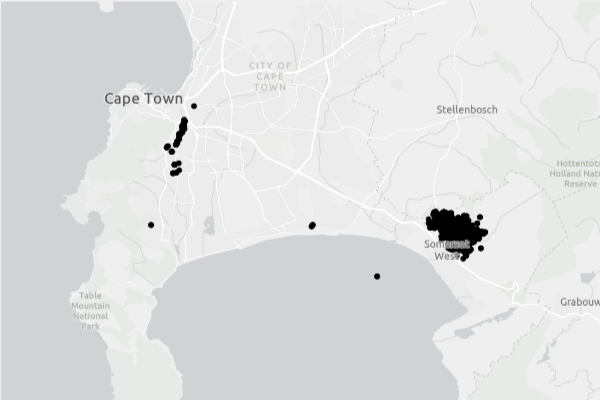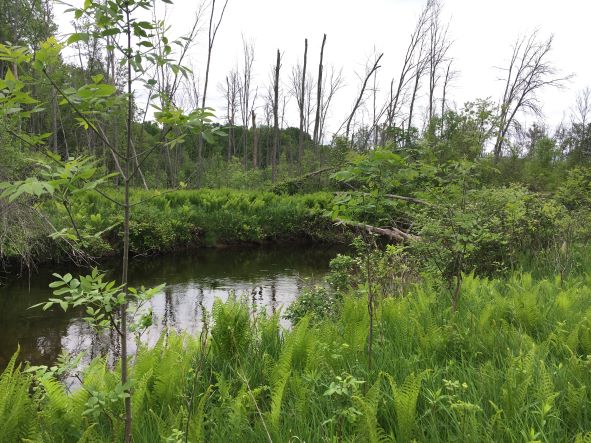
In early May I posted a blog about the Trump Administration’s proposed budget – saying that it would eliminate funding for nearly all USFS research & Forest Health Protection.
I can now provide some additional information.
The Administration has released a supplemental document providing a few details about the severe cuts it is proposing for USFS programs vital to countering bioinvasion in the coming fiscal year (FY2026), which starts October 1st. You can download this document at https://www.whitehouse.gov/wp-content/uploads/2025/05/appendix_fy2026.pdf
Congress has the final say on appropriations – so please!!! inform your representative & senators about why these cuts are disastrous.
USFS [See pages 162-168 of the Appendix]
Research & Development
The Administration requests $0 for R&D. It says it will strategically use existing carryover balances to responsibly terminate research programs & close research stations. Thus, funding for R&D will decrease from the $301 million in FY24 to $44 million in FY26. The Forest Inventory & Analysis will be shifted to the National Forest System and funded at $21.5 million – less than program supporters are seeking.
The proposal does contain an “additional amount” of $26 million for dealing with the consequences of wildfires, hurricanes & other natural disasters that occurred in calendar years 2022, 2023, and 2024. I am confused about this funding.
State, Private, and Tribal Forests
The Administration requests $0 for S,P&T. Again, the proposal says the agency will use existing carryover balances to effectively & responsibly terminate these programs. The number of employees would be cut from 520 employees in FY24 to 37.
Again, the proposal contains an “additional amount” of $208 million for Forest Health Management to deal with the consequences of wildfires, hurricanes & other natural disasters that occurred in calendar years 2022, 2023, and 2024. $14 million of this sum is earmarked for assistance to states in the Northeast that are anticipating an outbreak of eastern spruce budworm (which has been spreading from Canada). In a highly unusual move, the proposal says this funding is not subject to a requirement that grant recipients provide matching funds from non-federal sources. [Is it a coincidence that Maine Senator Susan Collins chairs the Senate Appropriations Committee?]
National Forest System
Total funding for NFS would be $1.5 billion. This includes an “additional amount” of nearly $2.5 billion for expenses related to the consequences of wildfires, hurricanes & other natural disasters that occurred in calendar years 2022, 2023, and 2024. $75 million of this amount is earmarked for construction or maintenance of shaded fuel breaks in the Pacific Northwest.
As I noted above, the Forest Inventory and Analysis program would be placed under the NFS.
I am particularly concerned that the budget proposal provides explicitly for $20 million to improve or maintain landscape & watershed conditions by preventing invasive plant infestations and installing aquatic organism passages, etc. There is no mention of programs intended to address damage caused by non-native insects and pathogens. It appears that the Administration proposes to drop all programs re: these organisms.
The overall objective of NFS programs is defined as managing the forests for productive use & resilience to catastrophic wildfire & provide broad range of ecosystem services. The budget allegedly prioritizes funding of programs designed to increase health & resilience of National Forests & Grasslands – including meeting multiple use requirements for resources on these lands.
The prose no longer says that timber production is the sole purpose of Nation forests – as the original budget stated.
APHIS appears to have survived – although the supplement provides minimal information (on pp. 85 – 87 of the Appendix).
The supplement contains a lengthy description of APHIS’ purpose — to protect America’s agricultural and natural resources from introduced pests. It requests $1.1 billion for FY2026. The only plant pest listed as a priority is exotic fruit flies. Personnel would be cut from 6,142 in FY24 to 5,092. I could find no specifics regarding funding for programs of interest – tree & wood pests, specialty crops, pest detection, and methods development.

Implications for Non-native Insects and Pathogens
Remember that USFS’s research and development program is intended to improve forest managers’ understanding of ecosystems, including human interactions and influences, thereby enabling improvements to the health and use of our Nation’s forests and grasslands. Most importantly to me, this program provides foundational knowledge needed to develop effective programs to prevent, suppress, mitigate, and eradicate the approximately 500 non-native insects and pathogens that are killing America’s trees.
The Forest Health Program provides technical and financial assistance to the states and other forest-management partners to carry out projects (designed based on the above research) intended to prevent, suppress, mitigate, and eradicate those non-native insects and pathogens. The program’s work on non-federal lands is crucial because introduced pests usually start their incursions near cities that receive imports (often transported in crates, pallets, or imported plants).
[FIA might inform all about where such pests are found — but it doesn’t address how to contain their spread, suppress their impacts, or restore the affected tree species.]
Eliminating either or both programs will allow these pests to cause even more damage to forest resources – including timber.
Both supporting research and on-the-ground management must address pest threats across all U.S. forests, including the more than 69% that are located on lands managed by others than the USFS. Already, the 15 most damaging of these pests threaten destruction of 41% of forest biomass in the “lower 48” states. This is a rate similar in magnitude to that attributed to fire (Fei et al. 2019). [This estimate does not include loss of beech beech leaf disease.] It is ironic that the Administration considers the fire threat to be so severe that it has proposed restructuring the government’s fire management structure.
I remind you that the existing USFS R&D budget allocates less than 1% of the total appropriation to studying a few of the dozens of highly damaging non-native pests. I have argued that this program should be expanded, not eliminated. Adequate funding might allow the USFS to design successful pest-management programs for additional pests (as suggested by Coleman et al.).
As a new international report (FAO 2025) notes, genetic resources underpin forests’ resilience, adaptability, and productivity. Funding shortfalls already undercut efforts to breed trees able to thrive despite introduced pests and climate change (the latter threat is still real, although the Administration disregards it). I have frequently urged the Congress to increase funding for USFS programs – which are sponsored primarily by the National Forest System and State, Private, and Tribal, although some are under the R&D program.
I repeat: Please ask your Member of Congress and Senators to oppose these proposed cuts. Ask them to support continued funding for both USFS R&D and its State, Private, and Tribal Programs targetting non-native insects and pathogens. America’s forests provide resources to all Americans – well beyond only timber production and they deserve protection.
Contacting your Representative and Senators is particularly important if they serve on the Appropriations committees.
House Appropriations Committee members:
Republicans: AL: Robert Aderholt, Dale Strong; AR: Steve Womack; AZ: Juan Ciscomani; CA: Ken Calvert, David Valadao, Norma Torres; FL: Mario Diaz-Balart, John Rutherford, Scott Franklin; GA: Andrew Clyde; ID: Michael Simpson; IA: Ashley Hinson; KY: Harold Rogers; LA: Julia Letlow; MD: Andy Harris; MI: John Moolenaar; MO: Mark Alford; MS: Michael Guest; MT: Ryan Zinke; NC: Chuck Edwards; NV: Mark Amodei; NY: Nick LaLota; OH: David Joyce; OK: Tom Cole, Stephanie Bice; PA: Guy Reschenthaler TX: John Carter, Chuck Fleishmann, Tony Gonzales, Michael Cloud, Jake Ellzey; UT: Celeste Maloy; VA: Ben Cline; WA: Dan Newhouse; WV: Riley Moore
Democrats: CA: Pete Aguilar, Josh Harder, Mike Levin; CT: Rosa DeLauro; FL: Debbie Wasserman Schultz, Lois Frankel; GA: Sanford Bishop; HI: Ed Case IL: Mike Quigley, Lauren Underwood; IN: Frank Mrvan; MD: Steny Hoyer, Glenn Ivey; ME: Chellie Pingree; MN: Betty McCollum; NJ: Bonnie Watson Coleman NY: Grace Meng, Adriano Espaillat, Joseph Morelle; NV: Susie Lee; OH: Marcy Kaptur; PA: Madeleine Dean; SC: James Clyburn; TX: Henry Cuellar, Veronica Escobar; WA: Marie Gluesenkamp Perez; WI: Mark Pocan
Senate Appropriations Committee members:
Republicans: AK: Lisa Murkowski; AL: Katie Britt; AR: John Boozman (AR); KS: Jerry Moran; KY: Mitch McConnell; LA: John Kennedy; ME: Susan Collins; MS: Cindy Hyde-Smith; ND: John Hoeven; NE: Deb Fischer; OK: Markwayne Mullin; SC: Lindsey Graham; SD: Mike Rounds TN: Bill Hagerty; WV: Shelley Moore Capito;
Democrats: CT: Chris Murphy; DE: Chris Coons; GA: Jon Ossof; HI: Brian Schatz; IL: Richard Durbin; MD: Chris van Hollen; MI: Gary Peters; NH: Jeanne Shaheen; NM: Martin Heinrich; NY: Kirsten Gillibrand; OR: Jeff Merkley; RI: Jack Reed; WA: Patty Murray; WI: Tammy Baldwin
Posted by Faith Campbell
We welcome comments that supplement or correct factual information, suggest new approaches, or promote thoughtful consideration. We post comments that disagree with us — but not those we judge to be not civil or inflammatory.
For a detailed discussion of the policies and practices that have allowed these pests to enter and spread – and that do not promote effective restoration strategies – review the Fading Forests report at https://treeimprovement.tennessee.edu/
or


























